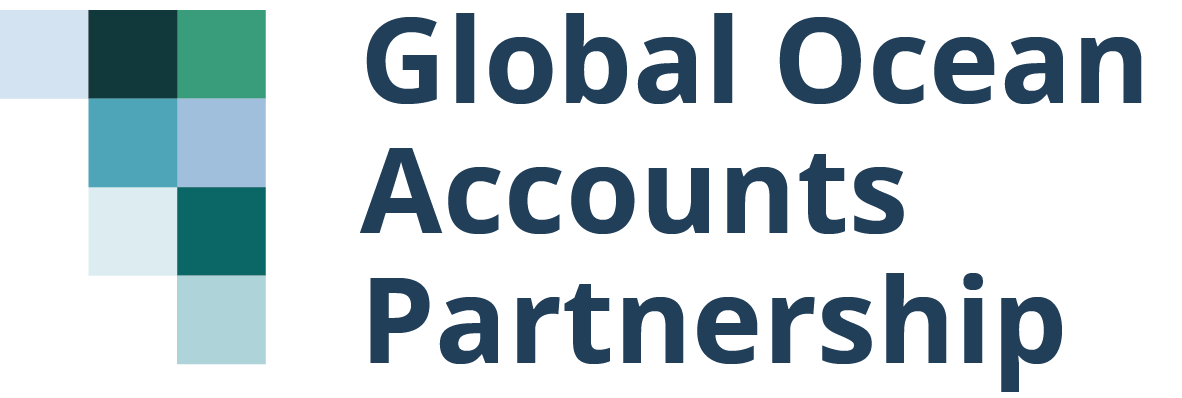Harnessing ocean accounts: data-driven solutions for ocean finance

Author: Arlette Schramm
To achieve the ambitious goals of the Kunming-Montreal Global Biodiversity Framework, finance must be mobilised not only to address critical gaps in biodiversity protection, ecosystem restoration, and nature repair, but also to harness the value that nature generates.
Our previous expert insight discussed these pressing challenges arising from a significant sustainable ocean finance gap. It included some initial thoughts on the transformative solution of ocean accounting to close that gap. Here, we further explore the role of the accounts, particularly in measuring and valuing ecosystem changes, which can guide investing in sustainable ocean development. A particular emphasis is on deploying innovative financial mechanisms to ensure resources reach communities and projects capable of restoring ecosystems and realising nature's economic potential.
Ocean accounting plays a vital role in advancing the financial priorities discussed at two major international conferences in 2024: the CBD COP16 in Cali, Colombia and UNFCCC COP29 in Baku, Azerbaijan. At both summits, the mobilisation of finance for biodiversity and climate action emerged as a central theme, highlighting the need for robust governance frameworks to enable nature-positive development. Ocean accounts strengthen the relationship between environmental and financial systems by providing comparable data based on environmental and economic statistics to measure and identify the economic value of healthy marine ecosystems.
Ocean finance and the financing gap
Ocean finance refers to the strategic allocation of resources to support sustainable management, conservation, and development of marine ecosystems.
Ocean finance addresses global challenges, enabling a regenerative approach to ocean health. Financial instruments such as blue bonds, blue impact investments, and blended finance are being used to direct funds toward projects that promote sustainable marine resource use, protect biodiversity, and support coastal livelihoods.
Despite the ocean covering more than 70% of the planet's surface and playing a critical role in global economic and environmental health, investment levels remain disproportionately low. In the past decade, less than 1% of ocean value has been directed toward sustainable projects. This financing gap is particularly noticeable in the context of Sustainable Development Goal (SDG) 14, the least funded of all SDGs. The degradation of natural ecosystems triggers far-reaching disruptions across the economy, affecting economic, social, and financial dimensions.
Unlocking the benefits of a sustainable, regenerative blue economy requires a coordinated effort to align financial flows with sustainability goals. This includes integrating innovative investment models and tools, governance reforms, and targeted capital deployment to ensure the long-term health of marine ecosystems while delivering measurable economic and social returns.
Challenges in ocean finance
Globally, mobilising finance for sustainable ocean development faces significant challenges, which can deter investors and capital flows, further exacerbating the funding gap.
These challenges include:
- Limited bankable projects arise from the inherent challenges of translating ocean assets—such as natural capital, ecosystem services, and biodiversity—into financially viable investment opportunities.
- Scalability issues, compounded by high perceived risks associated with ocean-related investments, stem from the difficulty in assessing long-term viability and financial returns due to a lack of reliable data on the value and sustainability of ocean assets, leading to investor hesitation.
- Insufficient data and impact assessment tools, which undermine the ability to measure and monitor investment outcomes effectively, are compounded by the lack of sophisticated metrics that can capture a holistic perspective of ecosystem services and the key drivers of change within them.
- Knowledge and skill gaps, particularly concerning integrating environmental and financial metrics, stem from the complexity of translating ecological data into financial models.
- A lack of tailored financial instruments designed specifically for ocean projects, creating a misalignment between investment needs and available funding mechanisms, is primarily due to the challenge of valuing ocean assets and ecosystem services in financial terms.
Ocean accounts as a solution
A comprehensive information infrastructure is essential to overcome these challenges. Ocean accounts provide a standardised framework that integrates environmental, economic, and social data on marine ecosystems, enabling consistent data collection, comparison, and evaluation across sectors. The accounts directly address data gaps and offer a holistic perspective of ecosystems, including translating the extent and condition of environmental assets, the services they provide, the key drivers of change within them and the critical flows to the economy into actionable insights.
Enhancing stakeholder communication
Ocean accounts enhance stakeholder communication by presenting a publicly accessible format. This approach ensures that scientists, investors, and policymakers can interpret marine ecosystem data consistently, reducing miscommunication and fostering transparency. Translating ecosystem data into quantifiable financial metrics involves assigning monetary value to natural assets such as net biodiversity gain, carbon sequestration, and fisheries productivity. Ocean accounts can facilitate this translation, allowing financial models to incorporate the benefits and risks associated with ecosystem health. For example, metrics on carbon capture by mangroves can be directly linked to revenue generation from carbon credits and coastal protection, making projects more bankable by identifying possible revenue streams.
De-risking ocean investments
Ocean accounts can provide robust data for predictive modelling and scenario analysis, allowing investors to assess long-term financial returns linked to ecosystem health. The accounts support underlying governance by aligning economic interests with environmental sustainability, driving capital toward scalable, sustainable ocean projects. This ultimately reinforces the financial viability of marine investments while supporting long-term ecosystem resilience. Quantifying environmental data in monetary terms allows asset managers to include it in assessing the return on investment (ROI), reflecting sustainability-related metrics while supporting ecosystem resilience, making it viable for large-scale capital mobilisation.
Catalysing innovative financial instruments
Innovative financial tools are emerging globally, including blue bonds and debt-for-nature swaps. The ocean accounts framework structures data by assigning measurable monetary value to natural processes. This is achieved through continuous data collection and analysis that links the ecological functions of marine ecosystems to their economic outputs. This approach enables the development of more sophisticated financial products tailored to the blue economy by identifying the key drivers of those services.
Ocean accounts could support the development of more sophisticated instruments, such as:
- Ocean impact bonds tied to specific ecosystem improvements
- Insurance products that factor in the protective services of coastal ecosystems
- Investment funds focused on sustainable ocean industries
- Blended finance models that combine public, private, and philanthropic capital to support ocean sustainability
The innovative financial tools could help channel much-needed capital into sustainable ocean projects, addressing the financing gap.
Evidence-based policy decisions
Ocean accounts could play a transformative role in shaping ocean finance policy and regulation by facilitating evidence-based decision-making. As governments and international bodies promote sustainable ocean use, ocean accounts data help quantify the value of marine ecosystems and assess trade-offs between various resource uses. This is particularly relevant for ecosystems, such as those rich in biodiversity, providing natural services.
In the context of marine spatial planning (MSP), ocean accounts can enhance planning processes by:
- Providing granular, data-driven insights
- In cases of competing uses, allow for more nuanced decision-making and decisions that reflect the balance of ecosystem services contributions and long-term sustainability
- Linking resources use to environmental impacts to improve cost allocation, ensuring that the economic benefits derived from ocean activities more accurately reflect their ecological costs
- Using the data to develop financial incentives such as preferential lending terms or tax relief for projects that actively contribute to improving ocean health and have translatable economic benefits.
Together, this translates into more efficient use of marine spaces and supports the integration of monetary and environmental priorities into planning decisions and policy development.
The future of ocean accounts in finance
Ocean accounts can:
- Enhanced data-driven decision-making in ocean finance
- Improved collaboration and communication among diverse ocean stakeholders utilising the translation of ecosystem data into actionable summary indicator
- Potential for dynamic, responsive financial strategies based on real-time ocean health data, reflecting the key drivers of change and symbiosis
The gap, caused by the need for bankable projects and accurate risk assessments, has long limited investment in sustainable ocean projects. As we look to the future, it's clear that tools like ocean accounts will be instrumental in mainstreaming the consideration of ocean health in economic decision-making. They address the ocean finance gap by enabling improved capital allocation and reflection of monetary benefits.
Tools like ocean accounts continue to evolve, integrating real-time data and predictive modelling, enhancing their utility and making them fit for purpose, benefiting the public and private sectors alike.
Looking to the future, investment portfolios could automatically adjust based on changes in ocean health indicators; optimising capital flows to be financially viable and ecologically beneficial. Likewise, lending decisions will be informed by up-to-the-minute data on marine ecosystems, enabling a more precise assessment of environmental risks and long-term economic impacts. These insights can reshape valuations by making them more accurate and supporting the creation of innovative financial products designed to attract capital to scalable, sustainable projects. As financial institutions, policymakers, and investors adopt these tools, the future of ocean finance will be more integrated with global sustainability goals, advancing economic growth, preserving marine ecosystems and closing the ocean finance gap.
